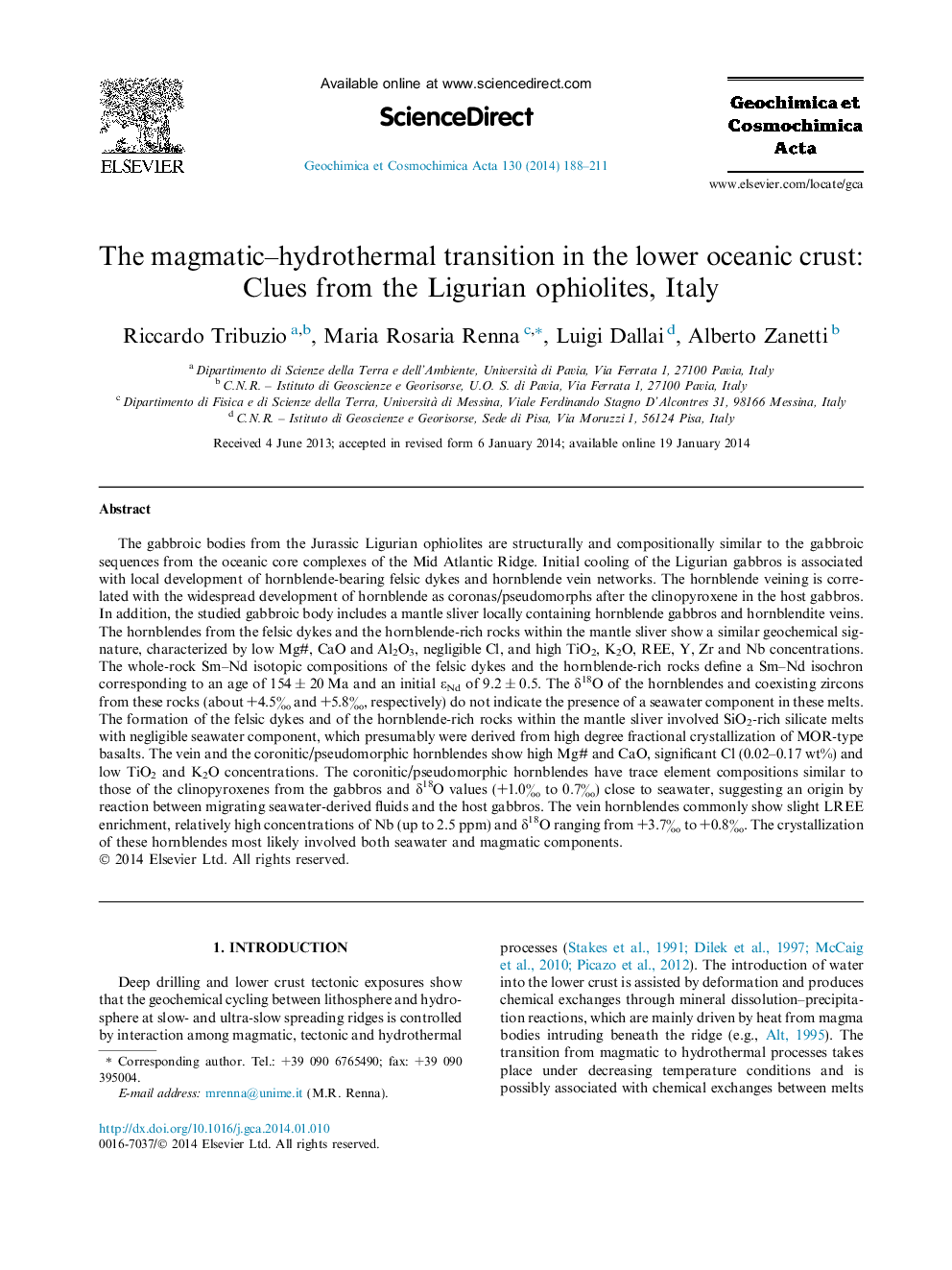| Article ID | Journal | Published Year | Pages | File Type |
|---|---|---|---|---|
| 4702170 | Geochimica et Cosmochimica Acta | 2014 | 24 Pages |
Abstract
The gabbroic bodies from the Jurassic Ligurian ophiolites are structurally and compositionally similar to the gabbroic sequences from the oceanic core complexes of the Mid Atlantic Ridge. Initial cooling of the Ligurian gabbros is associated with local development of hornblende-bearing felsic dykes and hornblende vein networks. The hornblende veining is correlated with the widespread development of hornblende as coronas/pseudomorphs after the clinopyroxene in the host gabbros. In addition, the studied gabbroic body includes a mantle sliver locally containing hornblende gabbros and hornblendite veins. The hornblendes from the felsic dykes and the hornblende-rich rocks within the mantle sliver show a similar geochemical signature, characterized by low Mg#, CaO and Al2O3, negligible Cl, and high TiO2, K2O, REE, Y, Zr and Nb concentrations. The whole-rock Sm-Nd isotopic compositions of the felsic dykes and the hornblende-rich rocks define a Sm-Nd isochron corresponding to an age of 154 ± 20 Ma and an initial εNd of 9.2 ± 0.5. The δ18O of the hornblendes and coexisting zircons from these rocks (about +4.5â° and +5.8â°, respectively) do not indicate the presence of a seawater component in these melts. The formation of the felsic dykes and of the hornblende-rich rocks within the mantle sliver involved SiO2-rich silicate melts with negligible seawater component, which presumably were derived from high degree fractional crystallization of MOR-type basalts. The vein and the coronitic/pseudomorphic hornblendes show high Mg# and CaO, significant Cl (0.02-0.17 wt%) and low TiO2 and K2O concentrations. The coronitic/pseudomorphic hornblendes have trace element compositions similar to those of the clinopyroxenes from the gabbros and δ18O values (+1.0â° to 0.7â°) close to seawater, suggesting an origin by reaction between migrating seawater-derived fluids and the host gabbros. The vein hornblendes commonly show slight LREE enrichment, relatively high concentrations of Nb (up to 2.5 ppm) and δ18O ranging from +3.7â° to +0.8â°. The crystallization of these hornblendes most likely involved both seawater and magmatic components.
Related Topics
Physical Sciences and Engineering
Earth and Planetary Sciences
Geochemistry and Petrology
Authors
Riccardo Tribuzio, Maria Rosaria Renna, Luigi Dallai, Alberto Zanetti,
